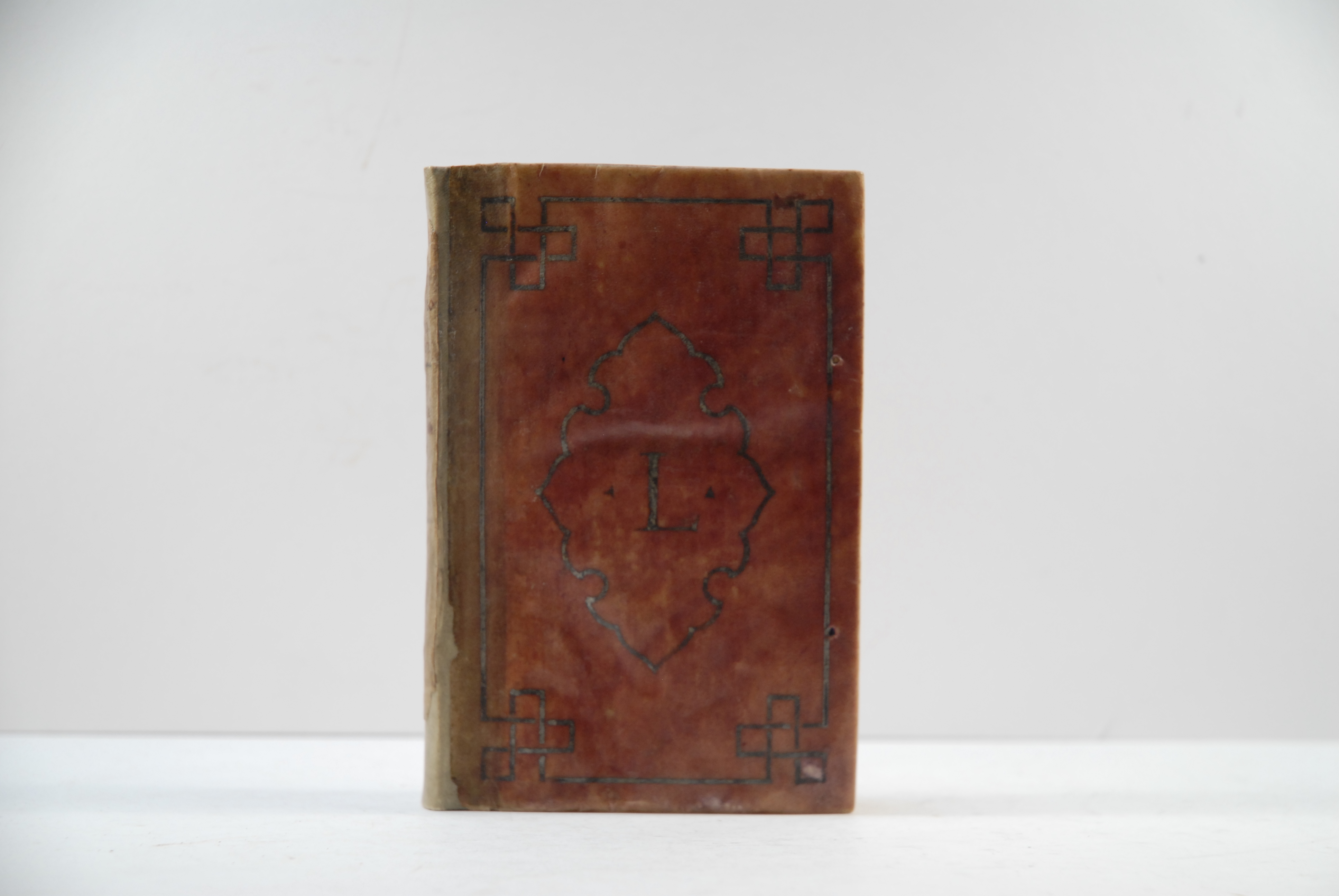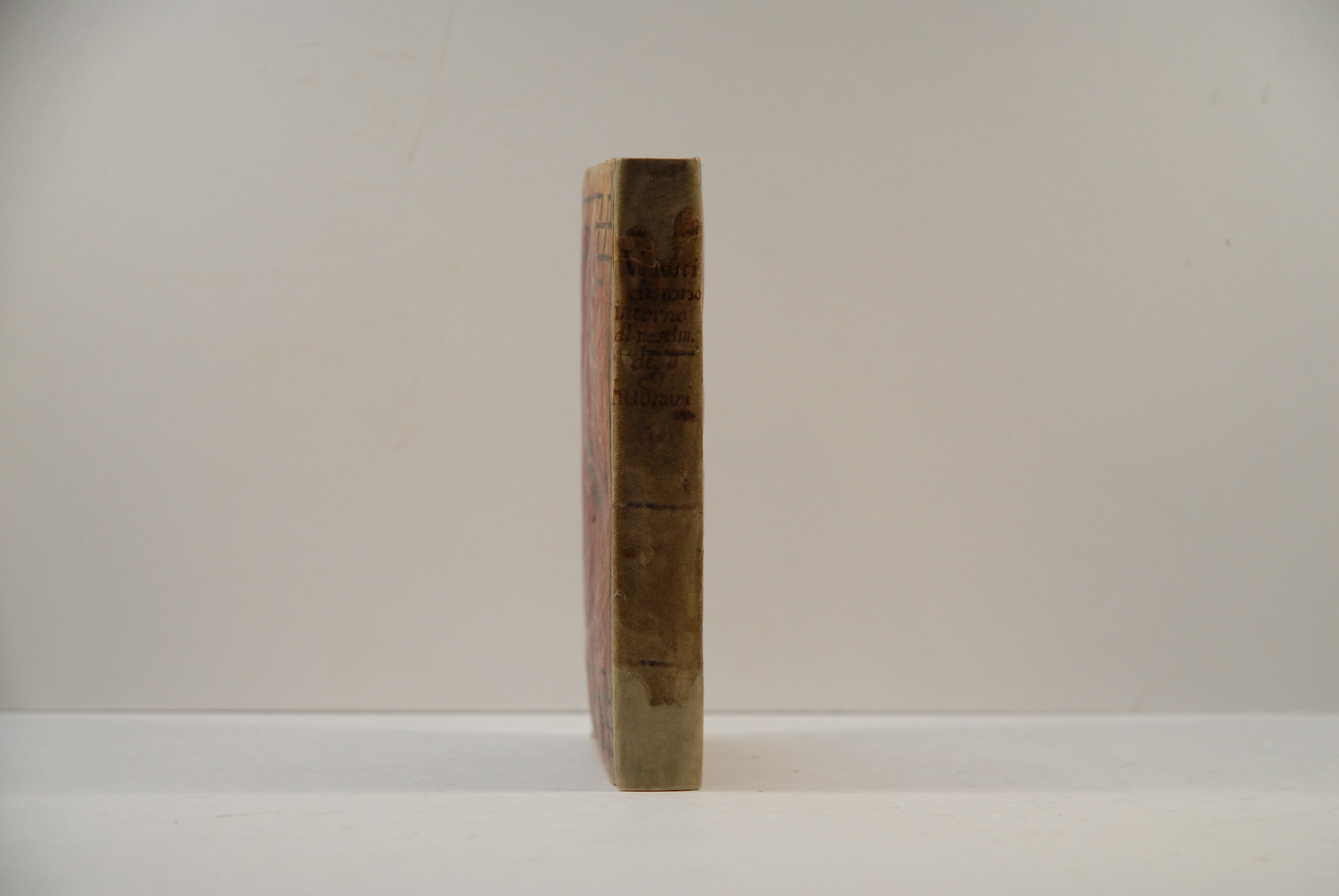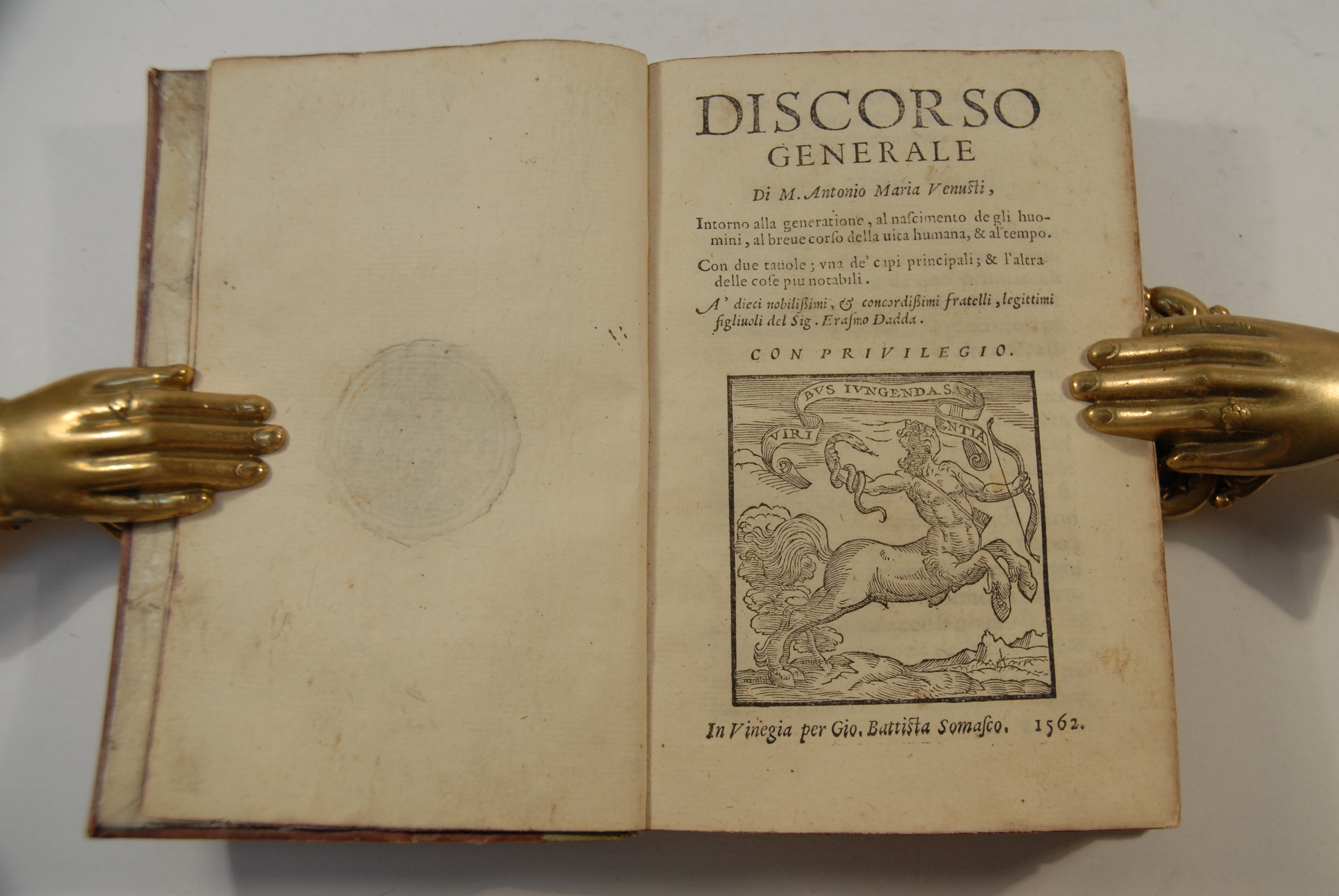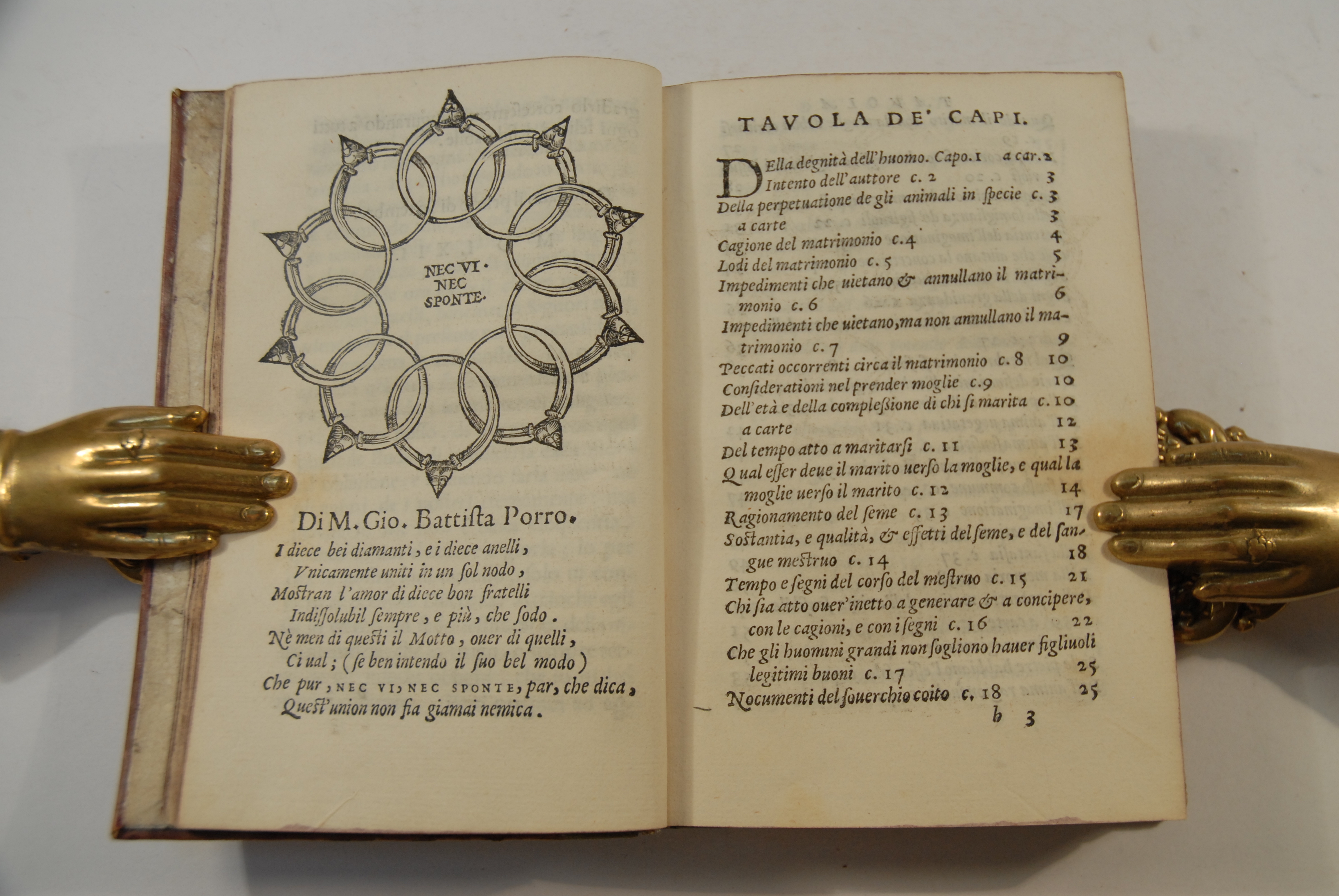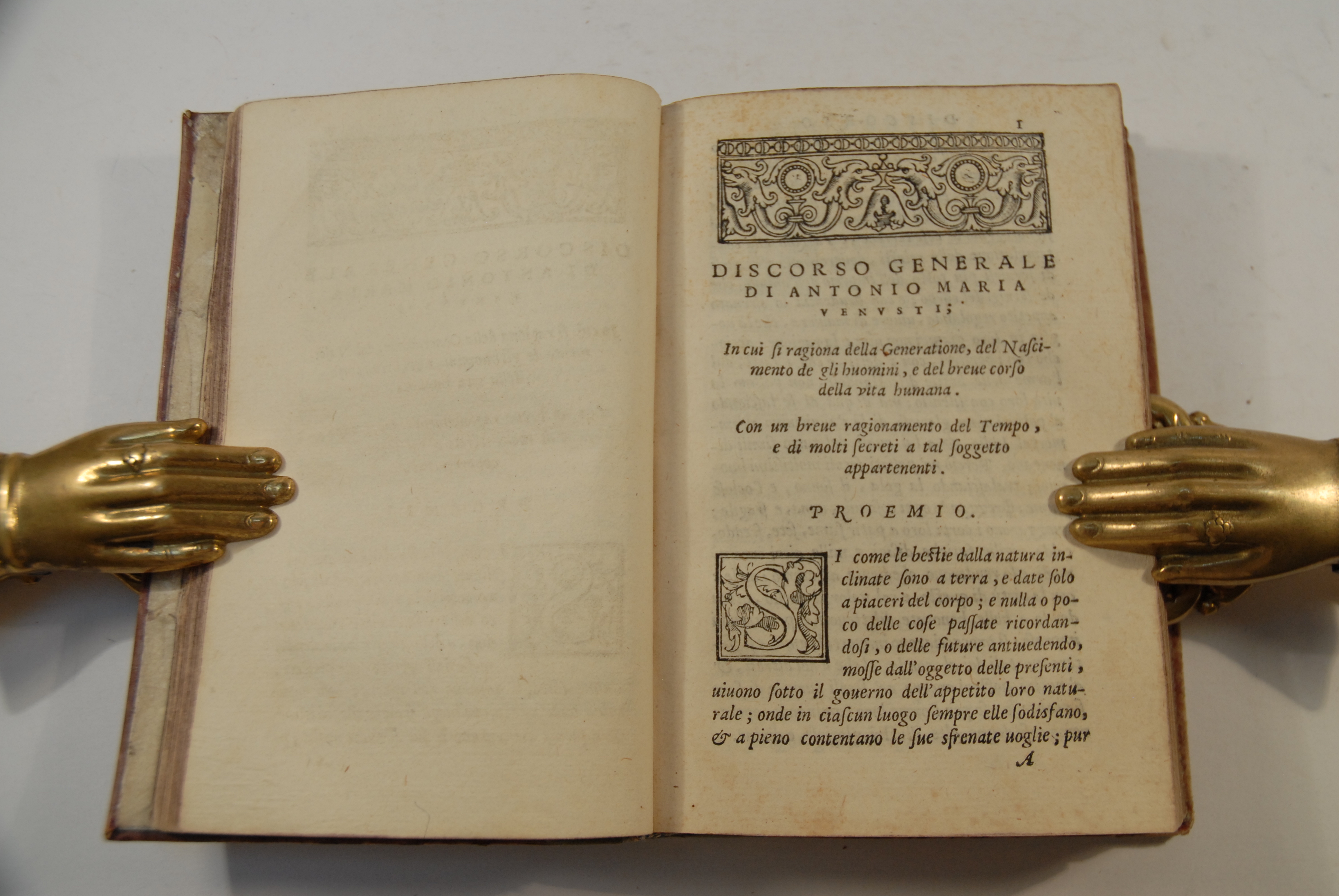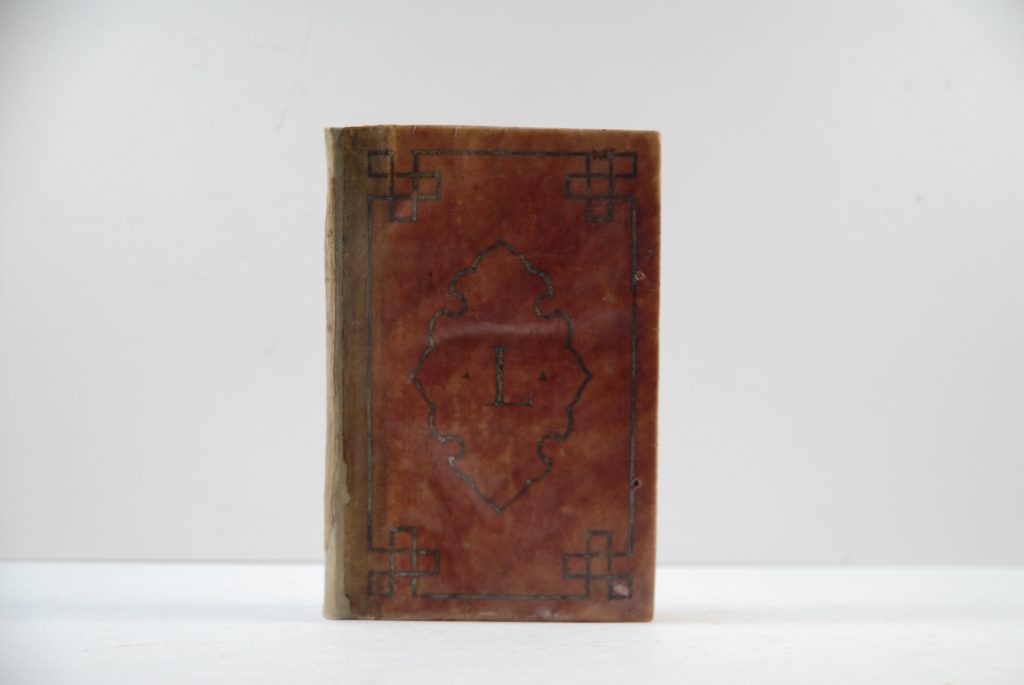VENUSTI, Antonio Maria
Discorso generale intorno alla generatione, al nascimento de gli huomini.
Venice, by Giovanni Griffio for Giovan Battista Somasco, 1562£1,950.00
FIRST EDITION, 8vo, ff. [xxiv] 147 [i] (ll. in G inverted). Dedication in Roman letter, text in Italic; woodcut ornaments and initials, printer’s centaur device on title, large woodcut emblem of the Dadda family preceding dedication; some age yellowing, infrequent light spotting. C18th century white on black armorial library stamp of Oratius Luccesinus preceding title page. In contemporary purple dyed vellum, later silver panel with interesting Greek style decoration at corners and central arabesque enclosing large “L” on upper cover, floral decoration on lower; all in silver. Rebacked, original spine partially remounted. Lacking ties.
First edition of Venusti’s work about generation, birth and brevity of life. There are two lists of contents: the first lists the headings of the 139 chapters into which the text is divided, the second lists the most interesting topics. Included are abortion, why the good die young and teeth can’t be destroyed by fire; the definition of the hermaphrodite, famous dwarfs of that time in Milan, Turkish men having more wives and why lust is especially characteristic of the hairy and the lame. The author starts from the viewpoint of the dignity of marriage, describing the relationship of husband and wife and the treatment of moral, social and sexual behaviour. He moves on to pregnancy – medical prescriptions and superstitions -, birth and children – how to cure, care and educate them-, often referring to the opinions of Avicenna, Aristotle, Averroes, Cicero, Plato, Homer and to the Bible. The result is a mixture of medicine and philosophy. The last section is about natural and unnatural ways of dying and time, its division into years, days and hours, the origins of this division and some philosophical speculations on it.
Oratius Luccesinus was a member of a family prominent in Lucca in the first half of eighteenth century belonging to the noblesse de la robe of the city. The decoration of the binding is unusual combining the Renaissance and the beginnings of Neoclassicism.
Antonio Maria Venusti (1529 – 1585) was a doctor from Grosio, a village near the city of Sondrio. He descended from a poor branch of the Venosta family, the Earls of Tirolo, which in the CXIV ruled that region. He lived in Milan at the court of Dadda family who undertook his education since his father had died during his boyhood and Venusti dedicated this work to the ten sons of Erasmo Dadda. Their motto, NEC VI NEC SPONTO, on p. b2v, is represented in the centre of a chain made up of ten diamond rings, compared in verse by Giovanni Battista Porro to the valour and strength of the Dadda family.
BM.STC. It. p.718; Wellcome I 6537; Durling 4570.In stock


